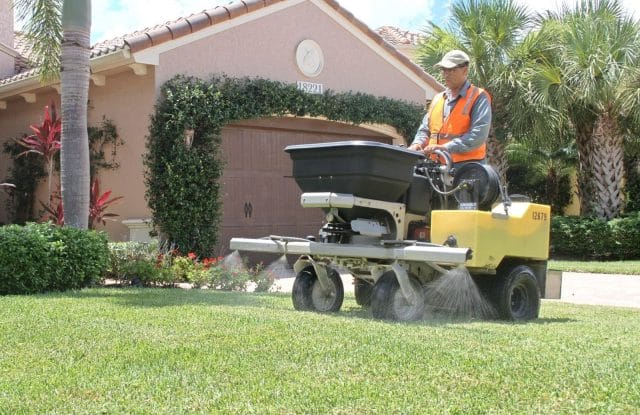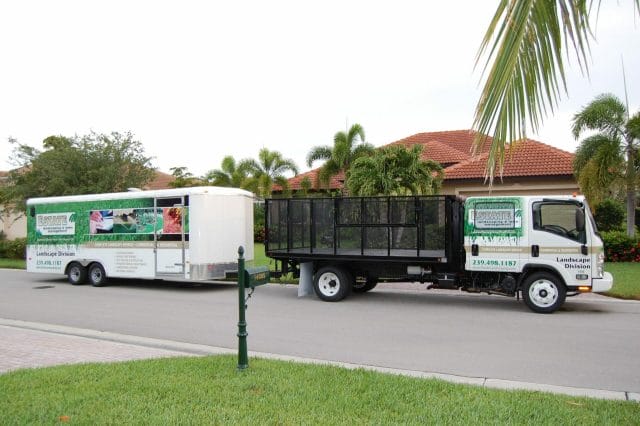Groundwork for Success: Testing and Improving Soil Health
Every beautiful landscape starts from the ground up—literally. While flowers, trees, and lawns may get most of the attention, the real foundation of a healthy, thriving landscape is the soil beneath it. Without proper soil structure and nutrition, even the most carefully chosen plants will struggle to flourish.
At Estate Landscaping, we believe in starting with the basics. That means paying close attention to what’s happening underground. Whether you’re managing a residential community, HOA common space, or a private garden, understanding and improving soil health can have a dramatic impact on plant performance, irrigation efficiency, and long-term sustainability.
Let’s dig into the importance of soil testing for healthy landscapes and how our team uses professional soil management to set your landscape up for lasting success.
Why Soil Testing Is Essential in Florida Landscapes
Florida’s soil is famously sandy and nutrient-poor in many areas, especially in Southwest Florida. That means it drains quickly, retains very little organic matter, and often lacks the essential nutrients that plants need to thrive.
Without a clear understanding of your soil’s composition, fertilization becomes a guessing game—and that leads to waste, imbalance, or even harm to your turf and ornamentals.
Here’s why soil testing matters:
- It reveals pH levels, which affect nutrient uptake
- Identifies deficiencies in key nutrients like nitrogen, phosphorus, and potassium
- Helps detect issues with salinity or compaction
- Guides proper fertilizer selection and application timing
- Reduces guesswork and helps prevent over- or under-treatment
By prioritizing the importance of soil testing for healthy landscapes, we ensure every treatment is tailored to your property’s specific needs—not just generic assumptions.
Improving Soil Quality for Better Plant Growth
Once a soil test is complete, we can begin making targeted improvements. Our goal isn’t just to correct problems—it’s to build a long-term soil strategy that supports plant health year-round.
Here’s how we go about improving soil quality for better plant growth:
1. Amending Organic Matter
Adding compost or soil conditioners increases the soil’s ability to retain nutrients and water—essential in sandy Florida soils. Organic matter also improves microbial activity, which is vital for breaking down nutrients into plant-available forms.
2. Adjusting pH Levels
If soil is too acidic or too alkaline, plants can’t absorb nutrients properly. Based on test results, we may apply lime or sulfur to bring the pH into a more productive range.
3. Enhancing Drainage
In areas where soil compaction or poor drainage is an issue, we may recommend aeration or the introduction of coarse sand and organic material to improve soil structure.
4. Strategic Mulching
Mulch isn’t just decorative—it plays a big role in regulating soil temperature, preserving moisture, and slowly adding nutrients as it breaks down.
By making these adjustments, we create a healthier growing environment that encourages strong roots, better flowering, and improved resistance to stress and disease.
Tips for Balancing Soil Nutrients
Plants rely on a precise mix of macro and micronutrients to perform well. Too much of one nutrient—or not enough of another—can throw the whole system out of balance.
Here are some of our top tips for balancing soil nutrients in residential and HOA landscapes:
1. Use Fertilizer Based on Testing
A “one-size-fits-all” fertilizer may not match your soil’s real needs. We apply custom fertilizer blends that deliver what your landscape actually requires—nothing more, nothing less.
2. Incorporate Slow-Release Products
Slow-release fertilizers provide consistent feeding over time, reducing the risk of nutrient spikes that can damage roots or pollute waterways.
3. Don’t Ignore Micronutrients
Nutrients like magnesium, iron, and manganese are just as important as nitrogen or potassium—especially in ornamental beds and turf. Deficiencies often show up as yellowing leaves or stunted growth.
4. Rotate Nutrient Applications
Instead of applying all nutrients at once, we create a feeding schedule that supports seasonal plant growth cycles.
Balancing nutrients means fewer pest issues, better bloom production, and more vibrant, resilient landscapes across your community.
Maintaining Soil Health in Florida Gardens
Once soil is improved, it needs to be maintained. Maintaining soil health in Florida gardens is an ongoing process that evolves with weather, planting cycles, and irrigation routines.
Here’s how we support long-term soil health across all our properties:
Routine Soil Monitoring
We test soil annually or biannually depending on property needs. This ensures we adjust fertilization and pH treatments before issues arise.
Integrated Irrigation Management
Overwatering can leach nutrients from soil, especially in sandy conditions. We align irrigation schedules with soil type, weather, and plant needs to reduce runoff and promote healthy absorption.
Organic Mulch Renewal
We refresh mulch beds as needed to replenish nutrients, control weeds, and retain soil moisture—essential for shrubs, ornamentals, and tree root zones.
Healthy Planting Practices
Choosing the right plants for your soil type reduces stress and improves longevity. When possible, we use native or Florida-friendly species that require fewer amendments and less intervention over time.
By combining science-based soil care with practical maintenance techniques, we keep your property’s foundation strong—literally.
Soil Health Services for HOA and Residential Communities
At Estate Landscaping, we provide soil testing and nutrient management as part of our comprehensive landscape care programs. For HOA communities and residential developments, this means healthier turf, longer-lasting plantings, and fewer ongoing maintenance concerns.
Our soil health services include:
- Professional soil sampling and lab analysis
- Customized soil amendment and fertilization plans
- Ongoing soil monitoring and reporting
- Coordination with irrigation and pest management services
- Education for boards and property managers on long-term soil health goals
Whether you’re dealing with poor turf performance, struggling hedges, or flower beds that just don’t pop, we can help uncover the root cause—and address it directly at the soil level.
Let’s Build Your Landscape on Solid Ground
Great landscapes don’t happen by chance—they grow from healthy, well-balanced soil. If your lawn isn’t as full, green, or vibrant as it should be, the problem could be underground. Now is the time to invest in soil health, before plant stress or poor performance takes a toll on your property’s appeal.
Let Estate Landscaping help you test, treat, and transform your soil for better results from the ground up.
📞 Call us today at 239-498-1187 or connect online to schedule your soil evaluation. Let’s lay the groundwork for a stronger, healthier landscape—starting now.
Receive a Free Consultation!
Related Posts

Spring Ahead: How to Prepare Your Landscape for a Season of Growth in Southwest Florida
Spring in Southwest Florida is a time of vibrant growth, warmer temperatures, and longer days. It’s also the perfect opportunity to prepare your landscape for the months ahead. Whether you’re managing a commercial property, HOA community, or resort, getting your outdoor spaces ready for spring is essential for maintaining curb appeal, healthy plant growth, and […]

Choosing the Best Landscape Maintenance Company
As a member of an HOA board or owner of a large commercial property that oversees property maintenance for one of the many respected properties in the area, you have a lot of factors to consider when choosing a company to maintain your property. You must understand the ins and outs of each company vying […]

5 Reasons to Choose Estate Landscaping Over the Competition
Owning or managing any type of property, from residential to commercial, requires the management of an associated landscape. Whether it be an expansive pasture full of trees, shrubs, and greenery, or a tiny patch of grass on the corner of the street, this landscape represents your property. It is in the best interest of the […]



